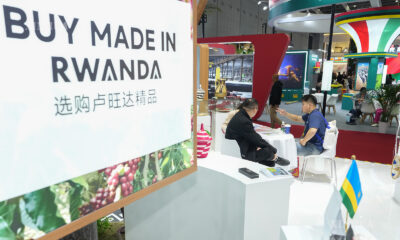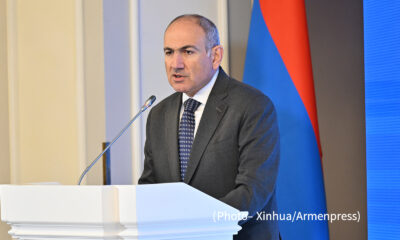Asia
BRI စီမံကိန်းများက ကပ်ရောဂါကာလတွင် လက်တွေ့အကျိုးဖြစ်ထွန်းရေးအတွက် အထောက်အကူဖြစ်ကြောင်း ကမ္ဘောဒီယား ပညာရှင် ပြောကြား
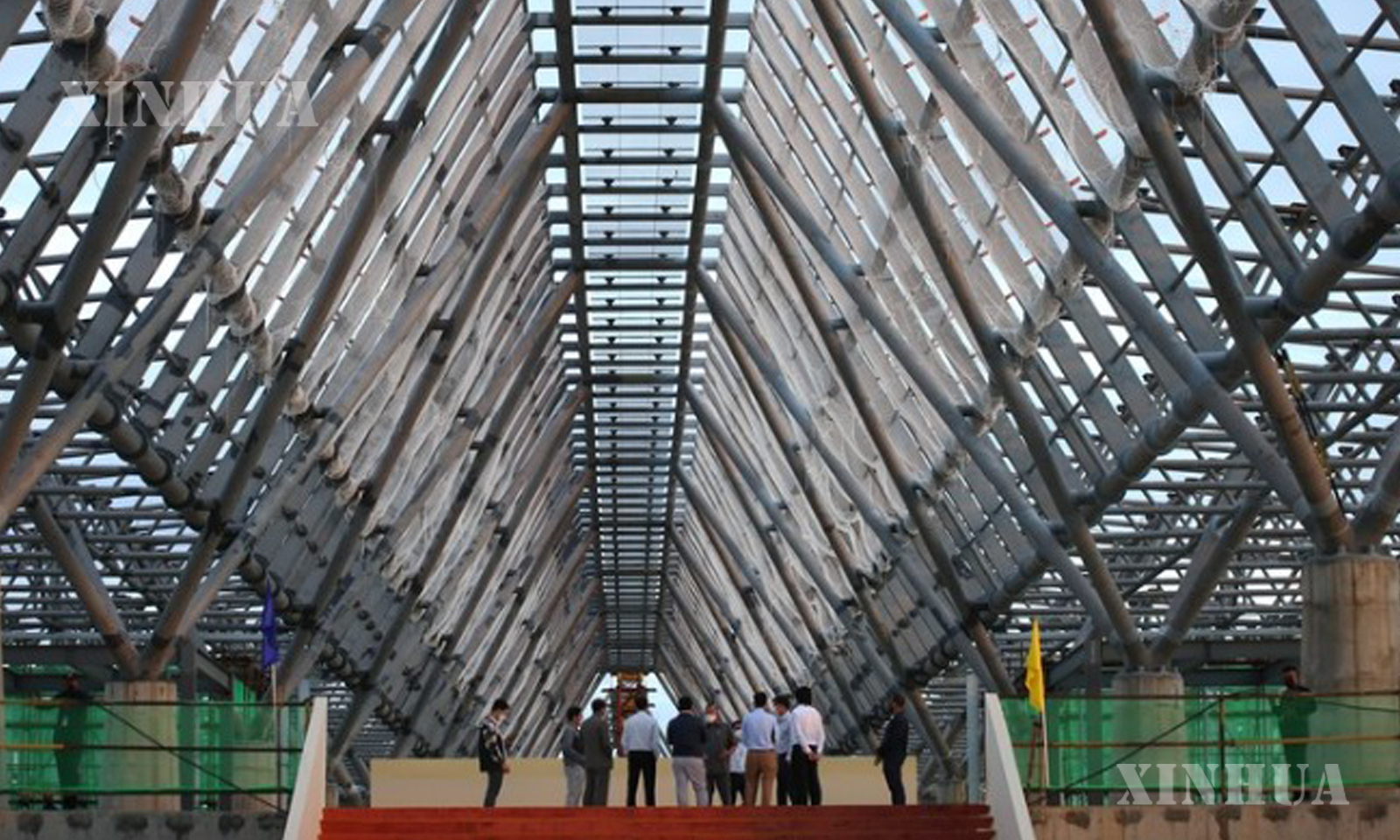
ဖနွမ်းပင်၊ မေ ၁၈ ရက်(ဆင်ဟွာ)
ရပ်ဝန်းနှင့်ပိုးလမ်းမ(BRI) ပူးပေါင်းဆောင်ရွက်ရေး စီမံကိန်းများက ကိုဗစ်-၁၉ ကပ်ရောဂါကာလ ကမ္ဘောဒီးယားနိုင်ငံနှင့်ကမ္ဘာတစ်ဝှမ်းအတွက် လက်တွေ့အကျိုးဖော်ဆောင်မှု အထောက်အကူဖြစ်ကြောင်း ကမ္ဘောဒီးယားပညာရှင်က စနေနေ့တွင် ပြောကြားခဲ့သည်။
“ကိုဗစ်-၁၉ ကပ်ရောဂါကာလမှာ ကပ်ရောဂါကြောင့် စီးပွားရေးကျဆင်းမှုကို လျော့နည်းစေရေးအတွက် BRI က အရေးကြီးတဲ့အခန်းကဏ္ဍက ပါဝင်ခဲ့တယ်လို့ ကျွန်တော်ထင်ပါတယ်”ဟု ဖနွမ်းပင်မြို့ BELTEI International University အကြီးတန်း ပါမောက္ခ Joseph Matthewsက ဆိုသည်။
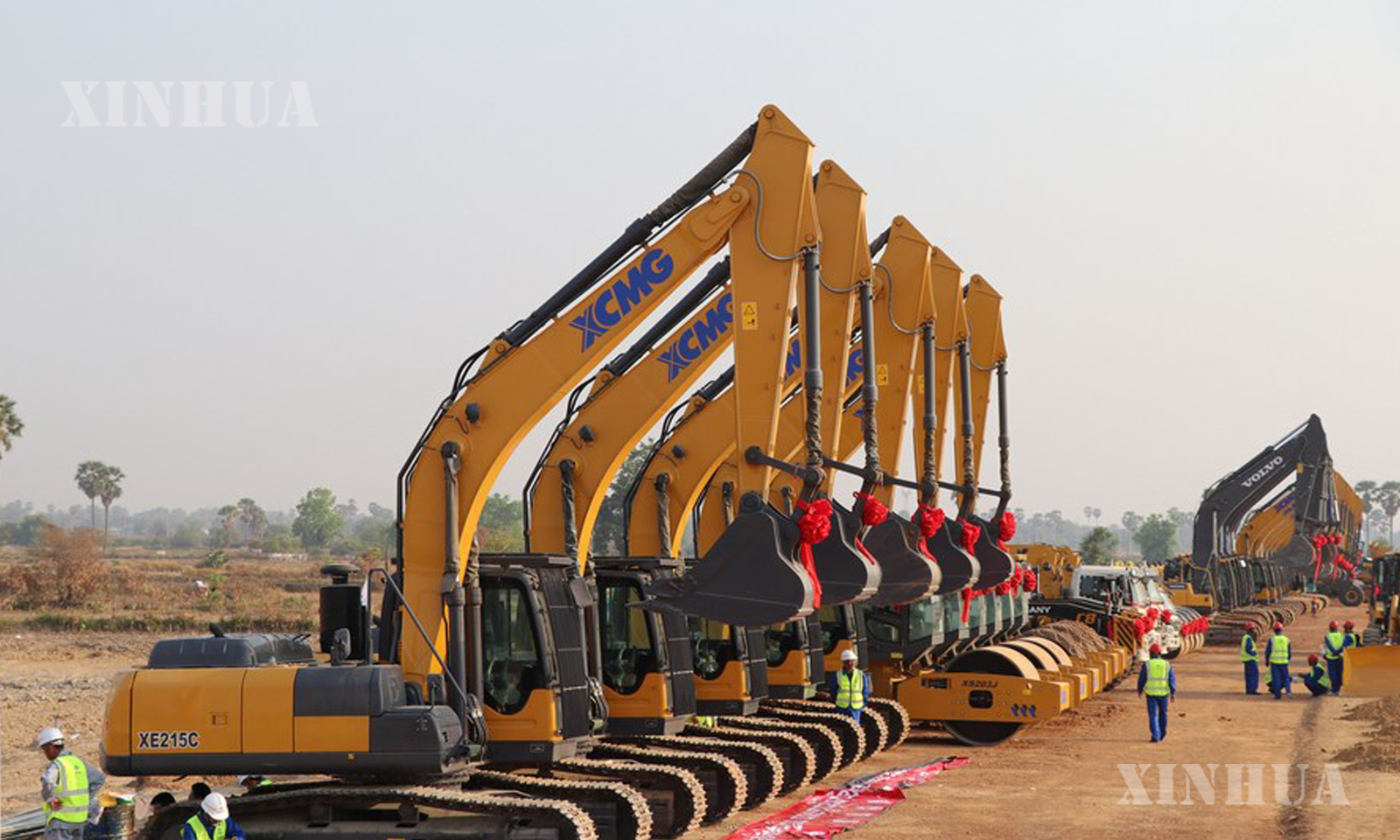
ကမ္ဘောဒီးယားနိုင်ငံ မြို့တော်ဖနွမ်းပင်မှ ရေနက်ဆိပ်ကမ်းပြည်နယ် Preah Sihanoukပြည်နယ်သို့ ချိတ်ဆက်ထားသော ကီလိုမီတာ ၁၉၀ ရှိ အမြန်လမ်း Kampong Speu ပြည်နယ်လမ်းအပိုင်း အုတ်မြစ်ချပွဲအခမ်းအနားမြင်ကွင်းအား ၂၀၁၉ ခုနှစ် မတ် ၂၂ ရက်က တွေ့ရစဉ်(ဆင်ဟွာ)
“BRIက ငြိမ်းချမ်းရေး၊ လုံခြုံရေး၊ စည်ပင်သာယာရေးနဲ့ စဉ်ဆက်မပြတ်ဖွံ့ဖြိုးတိုးတက်ရေးအတွက် ဒေသတွင်း နိုင်ငံတွေနဲ့ ကမ္ဘာ့နိုင်ငံများအကြား ပူးပေါင်းဆောင်ရွက်ရေးကျယ်ပြန့်စေရန် မောင်းနှင်အားတစ်ခု ဖြစ်နေတယ်”ဟု ၎င်းက ဆိုသည်။
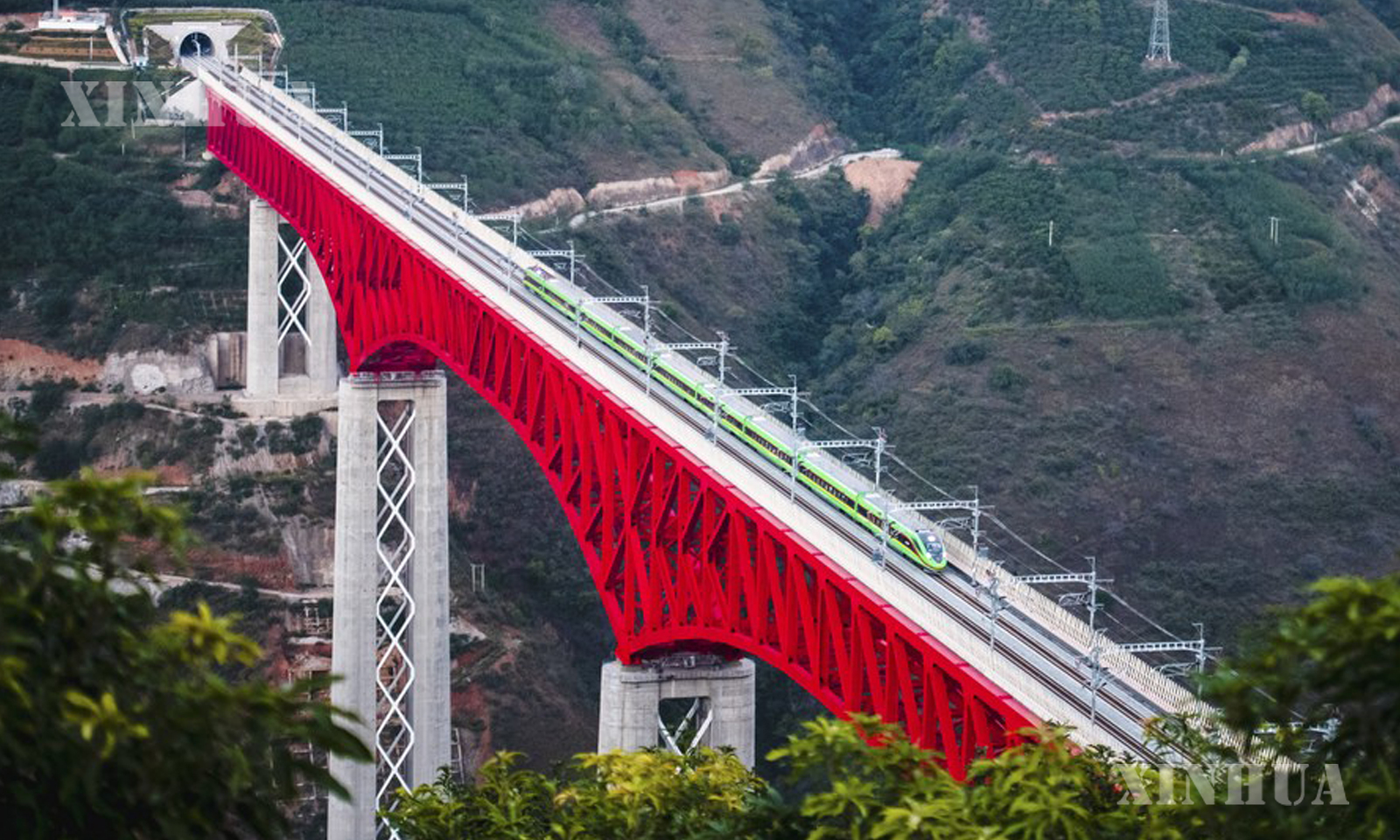
တရုတ်-လာအို လျှပ်စစ်ကျည်ဆန်ရထား တရုတ်နိုင်ငံ အနောက်တောင်ပိုင်း ယူနန်ပြည်နယ် ယွမ်ကျန်းမြစ်ကူးတံတားကြီးမှ ဖြတ်သန်းမောင်းနှင်သွားသည်ကို ၂၀၂၁ ခုနှစ် ဒီဇင်ဘာ ၃ ရက်က တွေ့ရစဉ်(ဆင်ဟွာ)
ရေအားလျှပ်စစ်စက်ရုံ၊ ဖနွမ်းပင်-ဆီဟာနုဗီးလ် အမြန်လမ်း၊ Siem Reap အပြည်ပြည်ဆိုင်ရာလေဆိပ်သစ်၊ အမျိုးသားအားကစားကွင်း ၊ ဆီဟာနုဗီးလ် အထူးစီးပွားရေးဇုန် စသည့် BRI စီမံကိန်းများက ကမ္ဘောဒီးယား စီးပွားရေးတိုးတက်မှုအတွက် ကြီးမားသော အထောက်အပံ့ဖြစ်စေကြောင်း ၎င်းက ပြောကြားခဲ့သည်။
“ဆီဟာနုဗီးလ်အထူးစီးပွားရေးဇုန်က နိုင်ငံရဲ့ပိုကုန်တိုးမြှင့်ရေးအတွက် အရေးကြီးတဲ့အခန်းကဏ္ဍမှ ပါဝင်သလို ရေအားလျှပ်စစ်စီမံကိန်းက လျှပ်စစ်ဓါတ်အား တည်ငြိမ်စွာ ပံ့ပိုးရေးအတွက်ဖြစ်ပြီး ဒါကသာမန်ပြည်သူတွေရဲ့ နေ့စဉ်နေထိုင်မှုဘဝနဲ့စီးပွာရေးလည်ပတ်မှုအတွက် မဖြစ်မနေလိုအပ်ချက်ဖြစ်တယ် ”ဟု Matthewsက ပြောကြားခဲ့သည်။
BRI ရှိ ကားလမ်း၊ ရထားလမ်း၊ လေဆိပ်၊ ပင်လယ်ဆိပ်ကမ်း၊ ရေအားလျှပ်စစ် စက်ရုံနှင် အထူးစီးပွားရေးဇုန် သို့မဟုတ် စက်မှုဇုန်စသည့် အခြေခံအဆောက်အအုံ ဖွံ့ဖြိုးတိုးတက်ရေးသည် သယ်ယူပို့ဆောင်ရေးကုန်ကျစရိတ် လျော့နည်းစေခြင်း၊ စီးပွားရေးယှဉ်ပြိုင်နိုင်စွမ်းကို မြှင့်တင်ခြင်း၊ ကဏ္ဍအမျိုးမျိုးအရင်းအမြစ်များ ဖြစ်ထွန်းစေရေးအတွက် အလွန်အရေးကြီးကြောင်း ၎င်းက ဆိုသည်။
အရှေ့တောင်အာရှနိုင်ငံများ ဖြစ်သည့် လာအို၊ ထိုင်း၊ အင်ဒိုနိးရှားနှင့် မလေးရှား စသည့်နိုင်ငံများတွင် BRIမှတစ်ဆင့် အကျိုးဖြစ်ထွန်မှုများရှိကြောင်း၊ တရုတ်-လာအို မြန်နှုန်းမြင့်ရထားလမ်း တရုတ်နိုင်ငံ ယူနန်ပြည်နယ် ကူမင်းမြို့နှင့် လာအိုနိုင်ငံမြို့တော် ဗီယင်ကျန်းမြို့ကို ချိတ်ဆက်ထားသော ရထားလမ်းသည် နှစ်နိုင်ငံအတွက်သာမက အခြား အရှေ့တောင်အာရှနိုင်ငံများအတွက်ပါ အကျိုးရှိစေကြောင်း Matthewsက ဖြည့်စွက် ပြောကြားခဲ့သည်။
“၂၀၁၃ ခုနှစ်တွင် BRI စတင်ကတည်းက ကမ္ဘာလုံးဆိုင်ရာ စီးပွားရေးဖွံ့ဖြိုးတိုးတက်ရေးရဲ့ မောင်းနှင်ရာ အင်ဂျင်သစ် ဖြစ်လာပါတယ်။ ဒေသတွင်းနဲ့ ကမ္ဘာလုံးဆိုင်ရာ ပူးပေါင်းဆောင်ရွက်ရေး hard and soft infrastructure တည်ဆောက်မှု၊ စီးပွားရေး၊ ကုန်သွယ်ရေး၊ ရင်းနှီးမြှုပ်နှံရေးအခွင့်အလမ်းများ၊ ယဉ်ကျေးမှုဖလှယ်ရေးနှင့်ပြည်သူချင်းဆက်သွယ်ရေးကို မြှင့်တင်ရာတွင် အထူးအရေးပါခဲ့တယ်”ဟု ၎င်းက ဆိုသည်။
တရုတ်နိုင်ငံက ကမ္ဘာတစ်ဝှမ်းတွင်ရှိသော ဖွံ့ဖြိုးဆဲနိုင်ငံများကို ၎င်း၏အသိပညာ၊ နည်းပညာ၊ ပိုင်ဆိုင်မှုများကို အမြဲတမ်းမျှဝေပေးလေ့ရှိကြောင်း ၊”အာရှအခြေခံအဆောက်အအုံ ရင်းနှီးမြှုပ်နှံမှုဘဏ်(AIIB)ပံ့ပိုးတဲ့ BRIသည် ကမ္ဘာကို လူသားမျိုးနွယ်တို့၏ကံကြမ္မာတူအကျိုးတူအသိုက်အဝန်းအဖြစ် ချိတ်ဆက်ကာ တရုတ်နိုင်ငံရဲ့ ဖွံ့ဖြိုးတိုးတက်မှု အသီးအပွင့်များကို ကမ္ဘာနှင့်မျှဝေနေခြင်း ဖြစ်တယ်”ဟု Matthewsက ပြောကြားခဲ့သည်။
BRIသည် ပိုးလမ်းမစီးပွားရေးရပ်ဝန်းနှင့် ၂၁ ရာစု ပင်လယ်ရေကြောင်းပိုးလမ်းမကို ရည်ညွှန်းခြင်း ဖြစ်ပြီး ရှေးခေတ်ပိုးလမ်းမ ကုန်သွယ်ရေးလမ်းကြောင်းကို ကျော်လွန်ကာ အာရှတိုက်၊ ဥရောပတိုက်နှင့် အာဖရိကတိုက်၏ ကုန်သွယ်ရေးနှင့်အခြေခံအဆောက်အအုံကွန်ရက်ကို ချိတ်ဆက်ရန် ၂၀၁၃ ခုနှစ်တွင် တရုတ်နိုင်ငံက အဆိုပြုခဲ့ခြင်း ဖြစ်သည်။ (Xinhua)
—————————-
(English Version)
Cambodian scholar says BRI projects provide tangible benefits during pandemic
2022-05-17 09:07:01
PHNOM PENH, May 17 (Xinhua) — Cooperation projects under the Belt and Road Initiative (BRI) have provided tangible benefits to Cambodia and the world during the COVID-19 pandemic, a scholar in Cambodia said on Saturday.
“During the COVID-19 pandemic, I think that the BRI has played a very important role in helping countries cushion the economic fallout of the pandemic,” Joseph Matthews, a senior professor at the BELTEI International University in Phnom Penh, told Xinhua.
“The BRI remains as a driving force to continue expanding cooperation among countries in the region and the world at large for the cause of peace, security, prosperity and sustainable development,” he said.
In the southeast Asian country, he said the BRI projects like hydropower plants, the Phnom Penh-Sihanoukville Expressway, the new Siem Reap International Airport, the national stadium, and the Sihanoukville Special Economic Zone, among others, have provided great benefits to Cambodia’s economic development.
“The Sihanoukville Special Economic Zone has importantly contributed to increasing the country’s exports, and hydropower plants have supplied stable electricity, which is essential to ensure the normalcy of people’s daily lives and businesses,” Matthews said.
He said the development of infrastructures such as roads, rails, airports, seaports, hydropower plants, and special economic or industrial zones under the BRI is crucial to reducing logistics costs, enhancing economic competitiveness, and diversifying sources of growth.
Southeast Asian nations such as Laos, Thailand, Indonesia, and Malaysia have also greatly benefited from the BRI, he said, adding that the China-Laos high-speed rail project, which connects Kunming in China’s Yunnan Province with Lao capital Vientiane, is a boon not only for both countries but also for other southeast Asian nations.
“Since its inception in 2013, the BRI is becoming the new engine of global economic growth and it has importantly contributed to boosting regional and global cooperation in terms of hard and soft infrastructure, economy, trade, investment opportunities, cultural exchange, and people to people connectivity,” he said.
Matthews said that China has always shared its knowledge, technology, and wealth with developing countries around the world.
“The BRI, backed by the Asian Infrastructure Investment Bank (AIIB), has been connecting the world as a community with a shared future for mankind, and China’s fruits of development have always been shared with the world,” he said.
The BRI, a reference to the Silk Road Economic Belt and the 21st Century Maritime Silk Road, was initiated by China in 2013 to build trade and infrastructure networks connecting Asia with Europe and Africa on and beyond the ancient Silk Road trade routes.■
1. Photo taken on April 3, 2022 shows the steel structure of Chinese-invested Siem Reap Angkor International Airport in Sotr Nikum district, about 40 km from the UNESCO listed Angkor Archaeological Park and 50 km from Siem Reap provincial town, Cambodia. (Photo by Ly Lay/Xinhua)
2. Machines line up during a groundbreaking ceremony for the construction of a 190-km expressway stretching from capital Phnom Penh to the deep-sea port province of Preah Sihanouk in Kampong Speu, Cambodia, March 22, 2019. (Xinhua/Mao Pengfei)
3. An electric multiple unit (EMU) train of the China-Laos Railway crosses a major bridge over the Yuanjiang River in southwest China’s Yunnan Province, Dec. 3, 2021. (Xinhua/Wang Guansen)



